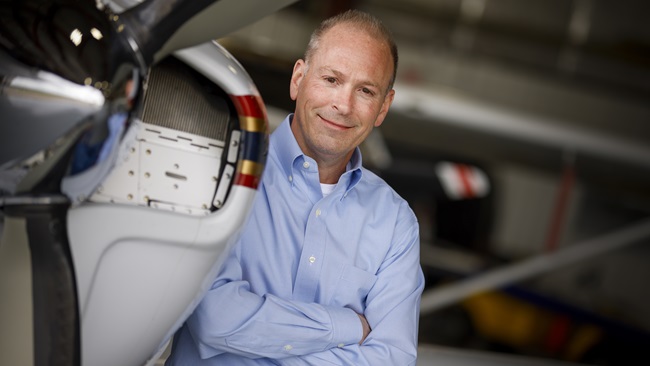Evaluating an experimental aircraft
Specific knowledge required
Experimental airplanes account for nearly 25 percent of the roughly 100,000 single-engine piston airplanes on the U.S. aircraft registry, and amateur builders are adding about 1,000 new experimentals to the U.S. fleet annually—a figure that rivals the total for FAA-certified piston singles delivered from factories.
Higher performance, lower purchase prices, more and better avionics choices, and reduced maintenance costs are convincing more aircraft buyers to choose existing experimental category airplanes. (The other option is building a kit airplane themselves.)
But how can the buyer of an experimental/amateur-built airplane know an aircraft has been built and maintained properly? Even if the builder supplies all the required paperwork, there’s little to assure that an approved process or materials were used because the process and materials, to a large extent, are the domain of the individual builder.
Syracuse estimates that between 30 and 40 percent of his inspections identify deal-killing flaws. “We see problems that are too expensive to fix,” he said.The same is true for flight testing. Unlike standard category aircraft that are typically flown and approved for service by trained production test pilots, those who perform the initial test flights on experimental airplanes aren’t required to have specialized training. At the conclusion of the phase one test period (which typically ranges between 25 and 40 flight hours) the pilot makes a logbook entry stating the experimental aircraft is “controllable throughout its normal range of speeds,” and that it has “no hazardous operating characteristics or design features, and is safe for operation.”
Vic Syracuse, founder of Base Leg Aviation, a company that specializes in prepurchase inspections and maintenance of experimental aircraft, says no two are identical. “Each airplane is assembled and modified differently,” said Syracuse, who has performed more than 1,000 prepurchase inspections on Van’s Aircraft models alone. “You really want to find someone who understands the construction process and where to look for errors. That kind of expertise is critical.”
Construction quality, materials, engines, and accessories vary widely on experimental airplanes. Some builders are master craftsmen with decades of aircraft construction and maintenance experience. Others have little or no technical training. But just because a builder has experience doesn’t guarantee everything is done right. “I’ve seen mistakes from experienced builders,” Syracuse said. “No one pointed out to them that they did it wrong the first time.”
Base Leg Aviation prebuy inspections are unusual in that the company evaluates the airplane and produces a detailed report on it—but the report isn’t specifically for a buyer or seller. It simply takes a hard look at the status of the airplane, components, and paperwork, and it notes whether applicable service bulletins have been complied with.
Syracuse estimates that between 30 and 40 percent of his inspections identify deal-killing flaws. “We see problems that are too expensive to fix,” he said.
“Even the pros need someone with fresh eyes to come in for inspections,” Syracuse said. “An outsider can catch things that they don’t see.”For fabric-covered aircraft, that can be the result of the builder improperly “mixing and matching” different chemical processes that result in weak bonds. In fiberglass airplanes, the builder might not have kept resin samples that can show the material’s strength as it ages. In metal airplanes, it can be poor riveting or corrosion.
A cottage industry of professional “builder-assist” shops has been formed to provide technical help to builders during the construction process. But even that’s not a guarantee that every construction task has been performed according to plans.
“Even the pros need someone with fresh eyes to come in for inspections,” Syracuse said. “An outsider can catch things that they don’t see.”
Documentation is a common problem area. Builders or subsequent owners may have changed propellers, added supplemental fuel tanks, painted the exterior, altered the interior, changed batteries, or made other substitutions that significantly changed the aircraft’s weight and center of gravity. Also, purchasers of experimental airplanes don’t have the authority to perform yearly condition inspections or make alterations. Only builders with FAA repairmen’s certificates or airframe and powerplant mechanics can do those jobs.
Kit aircraft themselves have changed dramatically over time. In the 1960s and 1970s, aircraft kits were collections of metal tubing and hardware. Builders were required to read blueprints, weld, and perform intricate woodwork, fabric stitching and covering, and myriad other skilled tasks. Finished aircraft were typically mechanically simple and had relatively low performance.
That changed in the 1980s and 1990s as kit builders like Stoddard-Hamilton and Lancair began offering sleek, composite aircraft that flew higher and faster than production models, and the kits themselves were far more complete.
Now, kits range from the light sport category Van’s Aircraft RV–12 that contains pre-drilled, stamped parts that builders assemble with hand tools to the Epic LT, a pressurized, six-seat, 1,200-horsepower, 300-knot turboprop that sells for more than $1 million. (Epic also produces an FAA-certified version of the same airplane.)
Syracuse says the process of buying an airplane is much the same regardless of whether it’s FAA certified or experimental. Buyers should get a prepurchase inspection by a trusted expert, make sure the logs are complete, and realize that experimental airplanes have far more variation and require a closer look than FAA-certified models.
“A prebuy inspection is a must on any aircraft purchase,” he said. “That’s especially true on an experimental aircraft—and the person who performs the inspection has got to have in-depth knowledge about the type of aircraft being evaluated. Any [airframe and powerplant] mechanic won’t do.”
Email [email protected]










